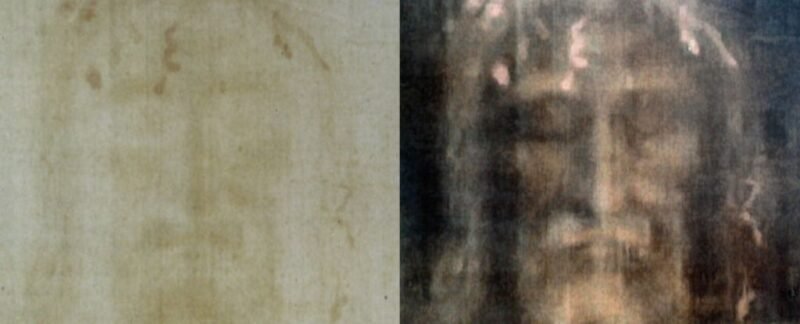Summary Points
-
Artifact Origins: The Shroud of Turin, first documented in 1354, is believed by some to be the burial cloth of Jesus, but its true origins and the identity of the figure remain unknown, leading to ongoing debates.
-
Art or Forgery?: Brazilian researcher Cícero Moraes argues the image on the shroud is likely a low-relief print rather than a true impression of a human body, supporting a 1978 hypothesis.
-
Anatomical Analysis: Moraes’s 3D modeling suggests that the shroud’s image shows greater compatibility with a low-relief sculpture than with a real human body, challenging traditional interpretations.
- Technological Innovation: The study emphasizes the use of digital technologies in historical research, blending science and art to uncover mysteries associated with the shroud, as published in Archaeometry.
New Analysis Suggests Shroud of Turin Image May Be Artistic Rather Than Historical
Recent research sparks fresh debate over the Shroud of Turin, a linen cloth revered as a holy relic. This artifact features a faint image of a man, traditionally associated with Jesus Christ. However, a new study by Brazilian designer Cícero Moraes challenges that notion.
Moraes argues that the image is likely not a likeness of a real person. Instead, he supports a hypothesis first proposed in 1978, suggesting the image was created through artistic means. According to this theory, creators may have placed the cloth over a low-relief sculpture, using pigments to create the faint impression.
To validate his idea, Moraes conducted simulations using open-source software. He compared the imprint of a linen cloth wrapped around a 3D model of a human body with one laid atop a low-relief sculpture. The results showed notable differences. The model of a human body produced an imprint that looked wider and more distorted, reminiscent of the Agamemnon Mask effect, which distorts features when flattened.
Conversely, the low-relief model’s image closely matched the contours of the Shroud’s design. Moraes states, "The printed image shows high compatibility with that present on the Shroud of Turin." This analysis suggests the Shroud may not bear the impression of any actual human, including Jesus Christ.
Additionally, the debate surrounding the artifact’s age continues. While some carbon dating studies indicate a medieval origin, a recent study proposes a first-century AD date. Despite these varying conclusions, many researchers agree the Shroud’s structure does not align with how a 3D body would deform the cloth.
Moraes invites others to explore these findings using digital technology. "Anyone with knowledge of these tools can recreate the fabric dynamics and engage in collaborative exploration," he explains. His work emphasizes how technology can help unravel historical mysteries, bridging science, art, and collaborative inquiry.
This intriguing intersection of history and technology fuels ongoing discussions about one of the world’s most enigmatic artifacts.
Continue Your Tech Journey
Learn how the Internet of Things (IoT) is transforming everyday life.
Access comprehensive resources on technology by visiting Wikipedia.
QuantumV1

